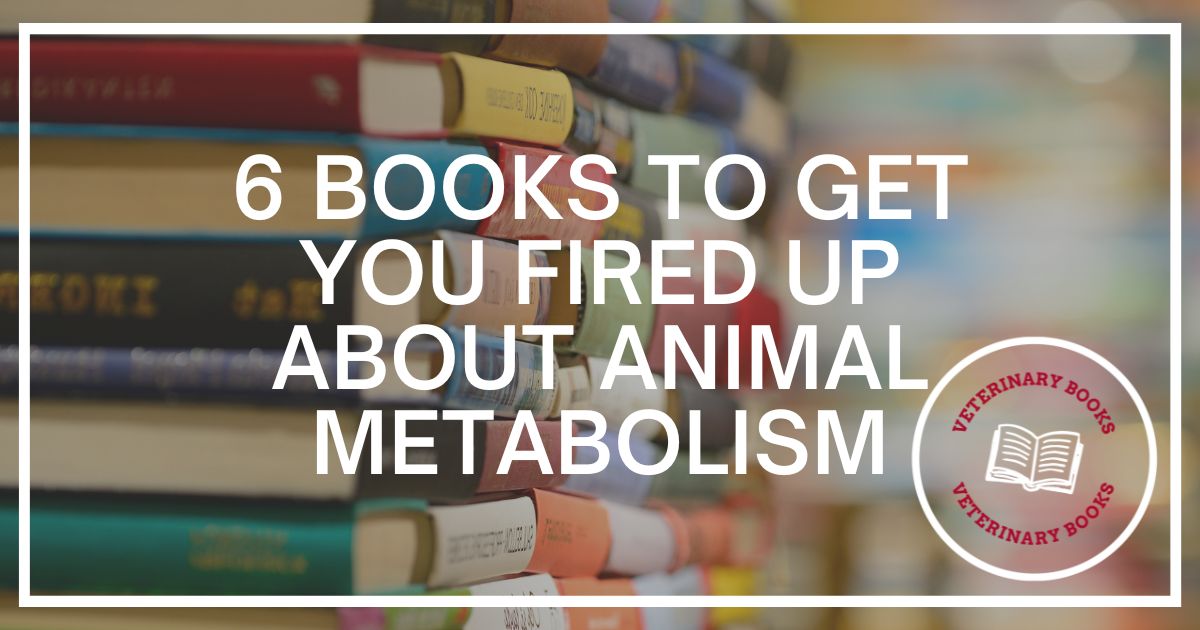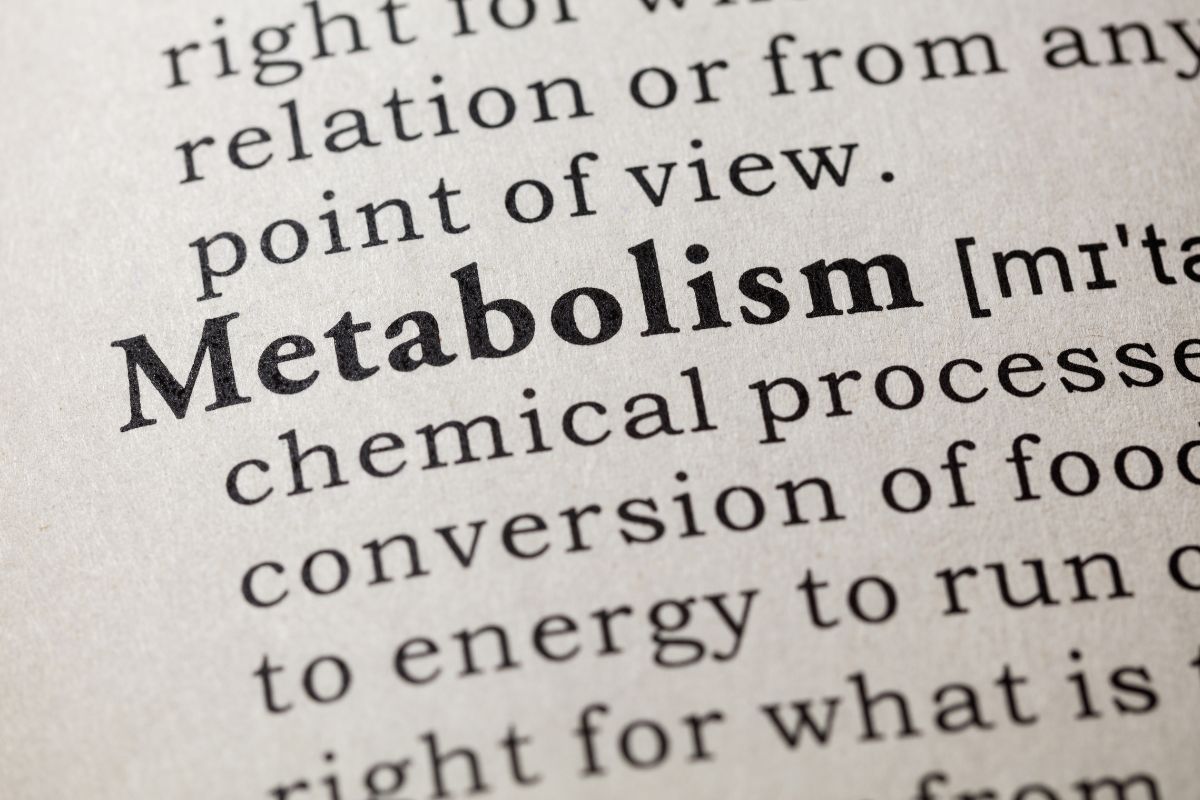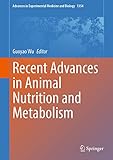For those who cannot see beauty in biology, it may be quite difficult to understand why finding that exact book that answers the question “Which animal would have the highest overall metabolic rate at rest?” is such a saver.
After all, the topic of animal metabolism and nutrition is not as fancy as human anatomy, at least in the eyes of regular people.
But just like humans are unique, animals are no less exceptional. Hundreds of species have specific nutrition needs, which means different metabolism for every case.
And when one finds the source that grasps all the main questions, it feels like a treasure.
Considering the difficulties of such book shopping, the following list of five books aims to help students, amateur farmers, and even researchers find the exact source that will answer all the questions about animal metabolism and nutrition.
















The World of Animal Metabolism
Animal metabolism is a complex concept that combines several critical physical reactions – absorption, degradation, transformation, excretion, and utilization of feed.
Any inconsistency in the process of nutrition can lead to metabolic disorders.
Understanding animal metabolism can prevent many of these diseases, but one has to learn about each of the stages of nutrition, which may be daunting for beginners. And this is why it is essential to start with the right resource.
6 Must-Own Animal Metabolism Books
The first book on the list is a collection of knowledge a postgraduate student or researcher may need. It can be too difficult for an amateur reader, so it is better to consider this book if one has basic knowledge of the subject.
Released in 2000, the first (and only) edition of “Farm Animal Metabolism and Nutrition” is one of the most comprehensive works in the field, even nowadays.
The book covers basic parts of animal metabolism, such as absorption and digestion of nutrients, means of feed evaluation, and peculiarities of feed intake and utilization.
Part one of the book talks about essential stages of metabolism in animals, starting from amino acids and peptides to cellular energetics. Each chapter explains one element of metabolism, what changes it goes through, and what impact it has on the animal.
Part two dedicates to feeding evaluation methodologies. The topic may seem more interesting to readers who are enthusiastic about farming but have only started to take it seriously.
This part of the book covers specific topics on animal metabolism, such as gas production, ways to measure amino acid digestibility in pigs, or checking energy expenses.
Interestingly enough, the book also pays significant attention to the commercial side of farming. For those who have an interest in metabolizable energy and its economic importance, this book may be of interest.
The third part focuses on feed intake and utilization. Just like the previous part about the practical sides of metabolism, it can be compelling for both knowledgeable and amateur farmers.
The authors also focus on psychological and metabolic aspects of feed intake control, as well as feeding behavior – the information that is important for all beginner farmers.
As an incentive for the book’s creation, its editor J.P.F. D’Mello expressed disappointment in the contemporary books on animal biochemistry and nutrition, as he found most literature outdated and its approaches – unsatisfactory.
The scope of “Farm Animal Metabolism and Nutrition” is an obvious advantage, especially for those who seek a more in-depth look into the processes of animal metabolism. Descriptive tables on things like amino acid transport systems and step-by-step images of protein synthesis explain complex concepts more easily.
Another win for this book is the number of contributors. Aside from J.P.F. D’Mello, the editor, the work on this manual included more than 20 specialists from all parts of the field from all over the world.
But no book is perfect. Unfortunately, despite its extensive grasp of all basic topics on animal metabolism, it makes a beginner slip out. In other words, this manual may be too complicated for someone who’s only trying to wrap their head around the subject.
Still, it is hard to overestimate the impact of “Farm Animal Metabolism and Nutrition” in the field. It has passed the test and is still competitive in the market.
It is not a bestseller – the book is 22 years old, after all. At this point, it is popular among students and researchers in the field.
Also, the book is available only in paperback format, so if someone wants to obtain it, there’s not much room for choice.
Released in 2021, this first-and-only-edition book on animal metabolism is an actual brick of knowledge. Three hundred forty-five pages have accumulated the latest discoveries on various aspects of animal nutrition, starting from the transport of nutrients to metabolic disorders.
In their mission, the authors – whose number is astounding – tried to break down the fundamentals of nutrition, development, growth, and health of animals. And unlike in the previous book, the focus here is on more than farm animals.
The book’s editor – Guoyao Wu – has a great reputation in the field of animal biochemistry and nutrition. The area of his interests is rather broad, considering his current research on metabolism at molecular and cellular levels.
A big focus of this book is on the interaction between animal and human nutrition, specifically how the quality of animal feed affects their and human health. For this, the authors discussed the newest developments in the field, like genome-editing biotechnologies.
Some innovative procedures, like using animals as bio producers of pharmaceutical proteins, gained authors’ attention as well. Ultimately, the manual is not limited to animal metabolism but its potential outcomes for the global economy, too.
Diving into the contents, the book includes seventeen chapters on the most diverse subjects. For example, some chapters discuss the fructose metabolism of sheep and pigs, nutritional regulation of embryonic survival and development, and nutritional regulation of water transport.
Remembering the close link between humans and animals, one chapter discusses the differences between implantation and placentation in humans, pigs, and sheep. While reading, one can have an impression that the authors are trying to walk on the edge of animal ethics.
Acknowledging the scope of the book’s composition, it does not seem suitable for amateur farmers or people who want to scratch the surface of animal metabolism. Eventually, the contents may seem a bit cumbersome for a regular reader.
Still, if someone is not a farmer but just an amateur researcher, this book may or may not fire up their interest in animal metabolism. It depends on the person.
Just like its considerable insides, the book’s layout is also a little intense. Divided into two columns per page, the text is brimming with references and external links to other books and peer-reviewed materials.
To sum up, the book is a nice choice for readers who already have some knowledge of animal metabolism and nutrition. For those who do not, this book may not ignite the urge to continue reading. Instead, it may cause confusion and frustration.
To understand the level of suitability, “Recent Advances in Animal Nutrition and Metabolism” has a similar narrating manner as “Farm Animal Metabolism and Nutrition,” which means overwhelm and a bit of brain fog.
By far, the best book for beginners out of the selection. From the name alone, “Comparative Animal Nutrition and Metabolism” seems laconic yet simple enough to provide the reader with all necessary information.
Released in 2010, the first (and only) edition of the book covers the main principles of nutrition and metabolism of both wild and domestic animals, which in itself is a compelling advantage of this book.
The authors pay major attention to explaining the differences in food selection of various species, as well as the peculiarities of their metabolism and nutritional needs.
Along with these topics, the book also discusses the health outcomes caused by specific nutrition. More scientifically, the authors touch on the subjects of digestive physiology and metabolic disorders in animals.
And more specifically, they talk about concepts that everyone must remember from the school course biology (or at least heard of), such as proteins, carbohydrates, and lipids. This is a simple link between animal and human metabolism, so the format is suitable for everyone.
The structure of the book contents also adds to the general clarity. The book starts with an introduction to digestive tract physiology, followed by the breakdown of protein, amino acids, and nitrogen metabolism.
Overall, the table of contents does not make the reader panic before all the long sentences and complicated words. Quite the opposite – looking at it returns the reader to school. Maybe at that time, everything was mind-boggling, but today biology may even seem interesting. At least with this book.
Diving deeper into the contents, “Comparative Animal Nutrition and Metabolism” does an excellent job of keeping things easy. The great advantage of the layout is using bold underlines to mark critical concepts, making it easy for the reader to follow.
One more advantage of the book’s layout is the short subsections. Straight to the business, the authors talk simply about things that seem to be on different comprehension poles, like proteins and Hofmann’s ruminant classification system.
As for the text itself, the language is simple yet not naive to make the reader feel stupid. To put things differently, the authors do a great job re-explaining animal metabolism comprehensively so that everyone can understand the subject.
Another advantage is the large number of images and photos. In every chapter, the authors present detailed images of the animal’s digestive system. When pictures are not enough to imagine the organ, the images allow the reader to observe it in a better resolution.
Overall, “Comparative Animal Nutrition and Metabolism” is an excellent version of animal physiology for grown-ups. Just like every schoolbook had a review part at the end of the chapter, there are questions and study guide sections for those who want to review the new information or brush up on something they knew before.
Finally, for those who find themselves hungry for more, the authors provide references to each chapter so that one can go out there and google more information from peer-reviewed sources.
Of course, just like the two previous books can be too difficult for newbies, “Comparative Animal Nutrition and Metabolism” can be too simple for those who already have some knowledge of animal metabolism.
This is the next level of animal physiology for those who managed to finish the previous book but are not ready for the first two. “Biology of Metabolism in Growing Animals” is part of the “Biology of Growing Animals Series.” Its release year was in 2005.
The very fact of both editors having a Ph.D. inspires confidence in what is under the cover. According to the description, the book aims to give an extensive analysis of animal nutrition and metabolism.
Combining the knowledge from several fields – physiology, nutrition, biochemistry, and many more – the authors provided a more advanced but not a detailed look at animal metabolism. So, for those who are neither beginners nor experts in the subject, this book is perfect.
Traditionally, looking through the contents of “Biology of Metabolism in Growing Animals,” the introductory chapter talks about metabolism and growth during prenatal life. The authors take the reader to the very beginning of life to explain the peculiarities of animal metabolism, even before birth.
Diving deeper into the material, the authors gradually reveal more difficult concepts like regulation of fetus’s metabolism, protein synthesis in skeletal muscle metabolism, or the role of cytokines in an animal’s response to infection.
Every chapter reveals more substantial concepts, but because all of the elements come from the previous chapters, it does not feel intimidating. It allows the reader to naturally engage in the process of learning and construct their expertise brick by brick.
For better comprehension, the book contains many illustrations and digestion schemes, including animal metabolism at different ages.
What is significant about this book is the complete focus on animal metabolism, from the beginning to the end of an animal’s life. Unlike in the first two books, where the authors shifted their focus to growing farm animals or the biochemical advances in pharmaceutics, “Biology of Metabolism in Growing Animals” provides exhaustive knowledge on animal metabolism alone.
On top of these benefits, this book often appears in the references of many peer-reviewed studies on the topic of animal metabolism, which once again proves its value in the scientific community.
The only shortcoming that this book has is intensive passages that squeeze in as much information as possible. As a result, the text may seem a little overwhelming for those not used to such a format. But overall, it is not a severe obstacle after some time.
Also, for those who remember, “Biology of Metabolism in Growing Animals” is part of the series, which means there is a whole collection of related knowledge if animal metabolism seems insufficient.
And because there are only ten items left in stock on Amazon, one can assume “Biology of Metabolism in Growing Animals” to be rather popular among students and researchers.
But it is not a reason for any discouragement – this book is pretty suitable for those who have some fundamental knowledge about animal metabolism. And even if it is not the case, one may be able to get the gist gradually after taking a rapid dive into the book.
Released in 2013, “Energy and Protein Metabolism and Nutrition in Sustainable Animal Production” may be captivating for people interested in animal metabolism and sustainability.
It is hard to overestimate the pressure that sustainability has on people’s lives every day. Especially now, during the massive vegan movement in the name of planet preservation.
Without a doubt, one can place “Energy and Protein Metabolism…” in one line with “Farm Animal Metabolism and Nutrition” and “Recent Advances in Animal Nutrition and Metabolism” as manuals that focus on specific problems that were somewhat related to than originating from animal metabolism.
Thinking about the issues that this book is trying to solve, the authors gave some explanations. This is why increasing the world population – a process that does not seem to slow down any time soon – occupies one of the central places in the book.
On that note, the authors adopt the prism of sustainability to speak about animal metabolism and nutrition.
Going under the book cover, a beginner on animal nutrition may not find anything direct about the digestive systems of farm animals.
Instead, the book offers topics like the contribution of small intestinal fermentation to starch disappearance in milk-fed calves or the formation of the gravid uterus in ewes. It sounds rather off-topic for someone who came to learn about animal metabolism.
At the same time, it does not mean one has to ignore this book. It would be quite interesting for those who have some basic knowledge of animal nutrition and have an interest in sustainability.
To tell the truth, the authors did a great job combining two relevant ideas – sustainability and animal metabolism – but overall, it is a pretty niche discussion that may not attract the general public.
The book, however, has some benefits for those who would like to try and conquer it – the chapters are relatively short and built in the format of peer-reviewed articles. This way, the authors introduce the chapter’s main point in the abstract, giving the reader a sufficient overview.
Similar to other “contestants” in this list, “Energy and Protein Metabolism…” contains an extensive collection of illustrations and tables to make reading more comprehensible.
Unfortunately, the book is not suitable for someone who is making the first steps toward animal biology, especially animal nutrition, and metabolism. But if the clash of animal nutrition and sustainability is something one has been looking for for a long time, this book will work for you.
Conclusion
As the review has shown, the subject of animal metabolism firmly settles among more intricate concepts like biotechnologies, sustainability, and commercialism.
This is why it can be challenging to choose the right book to start with. This review presented several printed options to choose from, from beginners to a more advanced level.
One final recommendation for those who may still feel overwhelmed by these five books is “Animal Nutrition: From Theory to Practice” by Philip Ian Hynd.
Published in 2019, the book comprehensively looks at the key aspects of nutrition and metabolism for most animal species. The reader can learn about digestive anatomy, nutrient intake, vitamin and mineral needs, and metabolic diseases.
The great advantage of this book is its undergraduate level, which means it is easy to understand. Furthermore, the author promises it to be valuable for veterinarians, producers, and animal nutritionists – basically, everyone with a relation or interest in the field.
Considering this book to be one of the latest published manuals on animal metabolism, its information is time-relevant and supported by high-quality illustrations and tables. The chapters in the book are also not overflowing with extra information; instead, they are straight to the point, which makes this book appealing content-wise and visually.
Hopefully, this review is helpful to those who have been looking for comprehensive yet not plain books on animal metabolism. After all, every valuable topic deserves a spotlight, and with a nicely compiled book, it is much easier to do.










